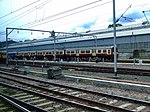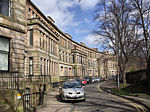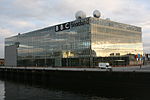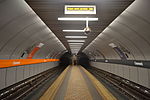Kinning Park subway station
Glasgow Subway stationsGlasgow railway station stubsGovanKinning ParkRailway stations in Great Britain opened in 1896 ... and 2 more
United Kingdom rapid transit stubsUse British English from March 2014

Kinning Park subway station serves the Kinning Park area of Glasgow, Scotland. However, to reach Kinning Park, a footbridge is provided across the M8. It was opened in 1896 and comprehensively modernised in 1977–1980. The station retains its original island platform configuration. Kinning Park station is the shallowest in the Subway system. The station is lightly used and recorded only 240,000 boardings in the 12 months ending March 2005.[1] New ticket barriers came into operation on 10 July 2013.
Excerpt from the Wikipedia article Kinning Park subway station (License: CC BY-SA 3.0, Authors, Images).Kinning Park subway station
Plantation Park Gardens, Glasgow Plantation
Geographical coordinates (GPS) Address Nearby Places Show on map
Geographical coordinates (GPS)
| Latitude | Longitude |
|---|---|
| N 55.850833333333 ° | E -4.2880555555556 ° |
Address
Plantation Park Gardens
G41 1AQ Glasgow, Plantation
Scotland, United Kingdom
Open on Google Maps









